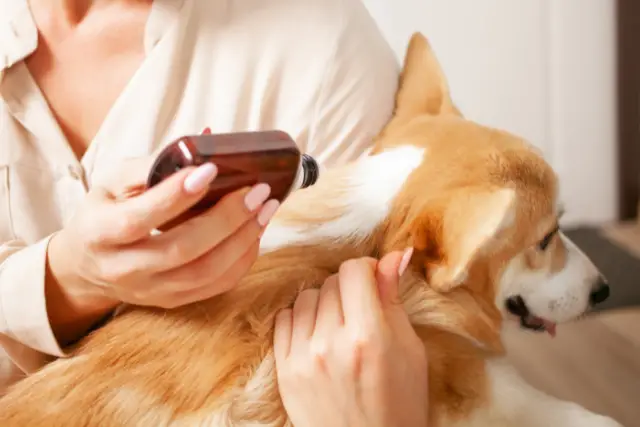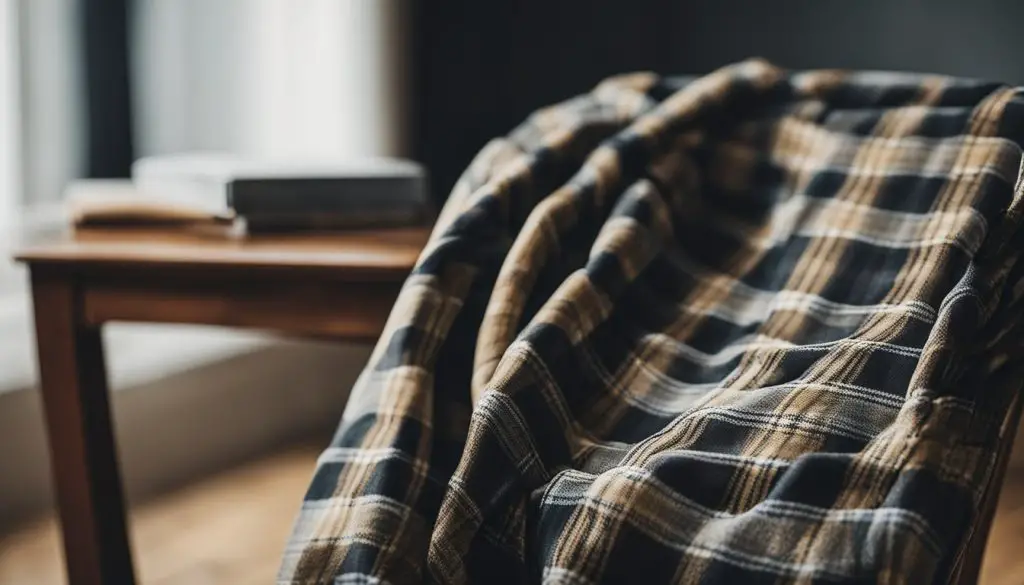Many people wonder, can fleas bite through clothes? The answer is that fleas generally cannot penetrate clothing. These tiny pests are equipped with strong legs allowing them to jump onto hosts and reach exposed skin.
However, loose or tightly woven fabrics may not provide complete protection against flea bites. Fleas can crawl into folds of clothing and may reach the skin, especially around the edges of garments like socks, collars, and sleeves.
It’s important to understand the nature of flea bites and the necessary measures to prevent them for both human and pet health.
Key Takeaways
- Fleas cannot typically bite through clothing but may reach skin under loose or thin fabrics.
- Preventing flea infestations requires consistent flea control measures for pets and in the environment.
- Flea bites can cause discomfort and health issues in humans and pets, thus requiring prompt attention.
Flea Bites and Clothing
When considering flea prevention, it’s crucial to understand how flea bites interact with clothing and whether garments offer any protection.
The Anatomy of Flea Bites
Fleas are small, wingless insects that feed on the blood of various hosts. Their mouthparts are uniquely adapted for piercing skin and siphoning blood meals.
A flea bite involves two main actions: the sharp “lancet” cuts the skin and a feeding tube searches for blood vessels. This intricate process is designed to draw blood efficiently and quickly.
Fleas’ Ability to Bite Through Clothes
Fleas may struggle to bite through certain types of clothes due to the weave and thickness of the fabric. However, they are adept at navigating through fibers to reach the skin.
Long pants and socks can offer a barrier but are not infallible:
- Fabric types: Specific materials like tightly woven synthetic fibers can reduce the chance of bites, while loose weaves like wool may offer less protection.
Fabric Type Level of Protection Synthetic Higher Cotton Moderate Wool Lower - Fit of clothes: Tight-fitting clothes tend to be more protective against flea bites.
While your clothing can serve as a layer of defense, it is not a foolproof method for preventing flea bites.
Preventive Measures and Flea Control
In addressing flea bites, it’s essential to implement preventive strategies that protect not only yourself but also your home and pets from these pests.
Protective Clothing Options
When venturing into areas prone to fleas, wearing the right clothing is crucial. Opt for:
- Long-sleeved shirts and long pants
- Socks pulled over pant legs
- Light-colored fabrics to easily spot fleas
Treat clothes with permethrin, an insecticide that can be applied to fabrics to repel fleas.
Environmental Control Measures
Maintaining a flea-free environment involves regular upkeep:
- Vacuum carpets, furniture, and pet bedding frequently.
- Wash or launder pet bedding and your bedding in hot, soapy water weekly.
- Use flea-proofing sprays or insecticides safely throughout the home, especially in dark corners and near pet resting areas.
Topical and Oral Flea Medications
For pets:
- Administer flea medication as per your vet’s guidance.
- Consider using a flea collar for continuous protection against fleas.
- Bathe pets regularly with soap and water to help remove fleas.
For yourself, look for products containing DEET or permethrin designed to repel fleas when applied to the skin or clothing. Always follow the product’s instructions.
Consequences of Flea Bites on Humans and Pets
Flea bites pose health risks to both humans and pets, often resulting in uncomfortable, itchy bumps. These bites can transmit diseases and cause allergic reactions.
Health Risks Associated with Flea Bites
Allergic Reactions: You may experience an allergic reaction to flea bites, manifesting as small, itchy, red bumps typically around your ankles and lower legs. Scratching these bites can lead to increased irritation and potential secondary infections.
Common Symptoms:
- Itchy skin
- Hives or rash
- Swelling around the bite
Treatment:
- Antihistamines
- Anti-itch creams
Disease Transmission: Fleas can carry bacteria and viruses, leading to serious diseases. The most notorious is the plague, though it’s extremely rare today. Flea bites can also facilitate the transfer of tapeworms to both humans and pets.
Potential Diseases:
- Plague
- Murine typhus
- Tapeworm infection
Preventive Measures:
- Regular flea treatments
- Maintaining clean surroundings
Long-Term Impact of Flea Infestations on Domestic Animals

Health Complications in Pets: Dogs and cats are common hosts for fleas. Long-term exposure to flea infestations can result in chronic itchy skin, hair loss, and anemia, especially in severe cases. Pets may also develop flea allergy dermatitis, leading to intense scratching and skin infections.
Impacted Areas on Pets:
- Skin and coat
- Energy levels
- Weight
Management:
- Flea combs
- Topical or oral flea treatments
- Regular vet check-ups
Frequently Asked Questions
In this section, we will answer some common queries regarding fleas and their interaction with humans and clothing.
What are effective home remedies for repelling fleas in humans?
To repel fleas naturally, consider using lemon spray. You can make it by boiling a sliced lemon in water and then spraying the cooled liquid onto your skin or clothing. Essential oils like eucalyptus, tea tree, and lavender mixed with water can also create a repellent spray.
What can be applied to my skin to prevent flea bites?
Applying insect repellents that contain DEET or picaridin can effectively prevent flea bites on your skin. Natural options include essential oil-based lotions with citronella, neem, or peppermint oils, which fleas tend to avoid.
How long can fleas survive on clothing?
Fleas can live on clothing for a few hours up to several days, particularly in dark and humid conditions. However, they require a host to provide the necessary blood meals for survival longer than a few days.
Are fleas capable of thriving in bedding materials?
Yes, fleas can infest and thrive in bedding materials, especially if pets with flea infestations sleep in the same area. Regular washing of bedding in hot water can help eliminate fleas and their eggs.
Can fleas penetrate all types of fabrics?
Fleas cannot bite through all types of fabric. Thick and tightly woven fabrics are less penetrable than lighter, loosely woven materials.
However, fleas can crawl into openings in clothing, such as cuffs or collars, to reach the skin.



